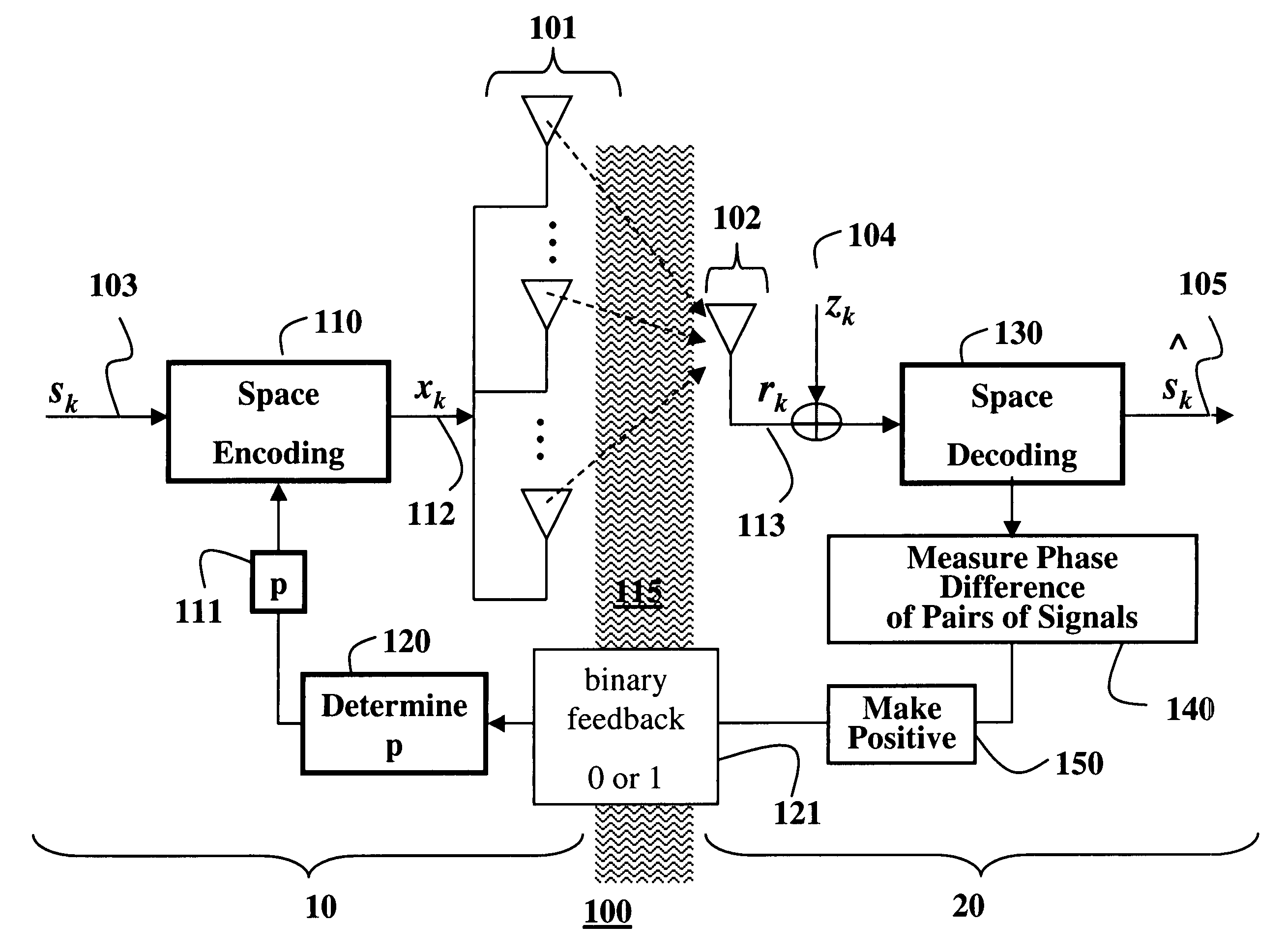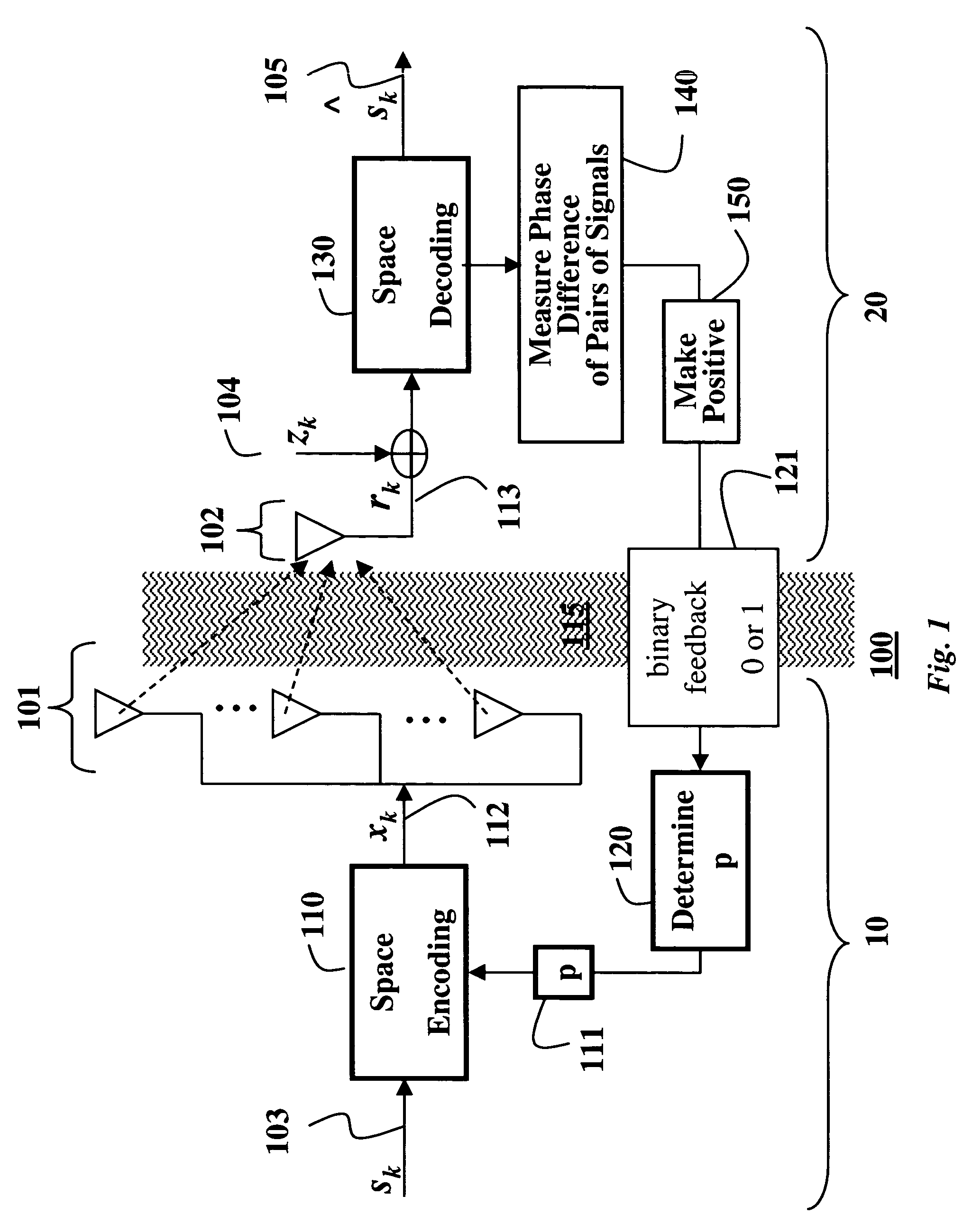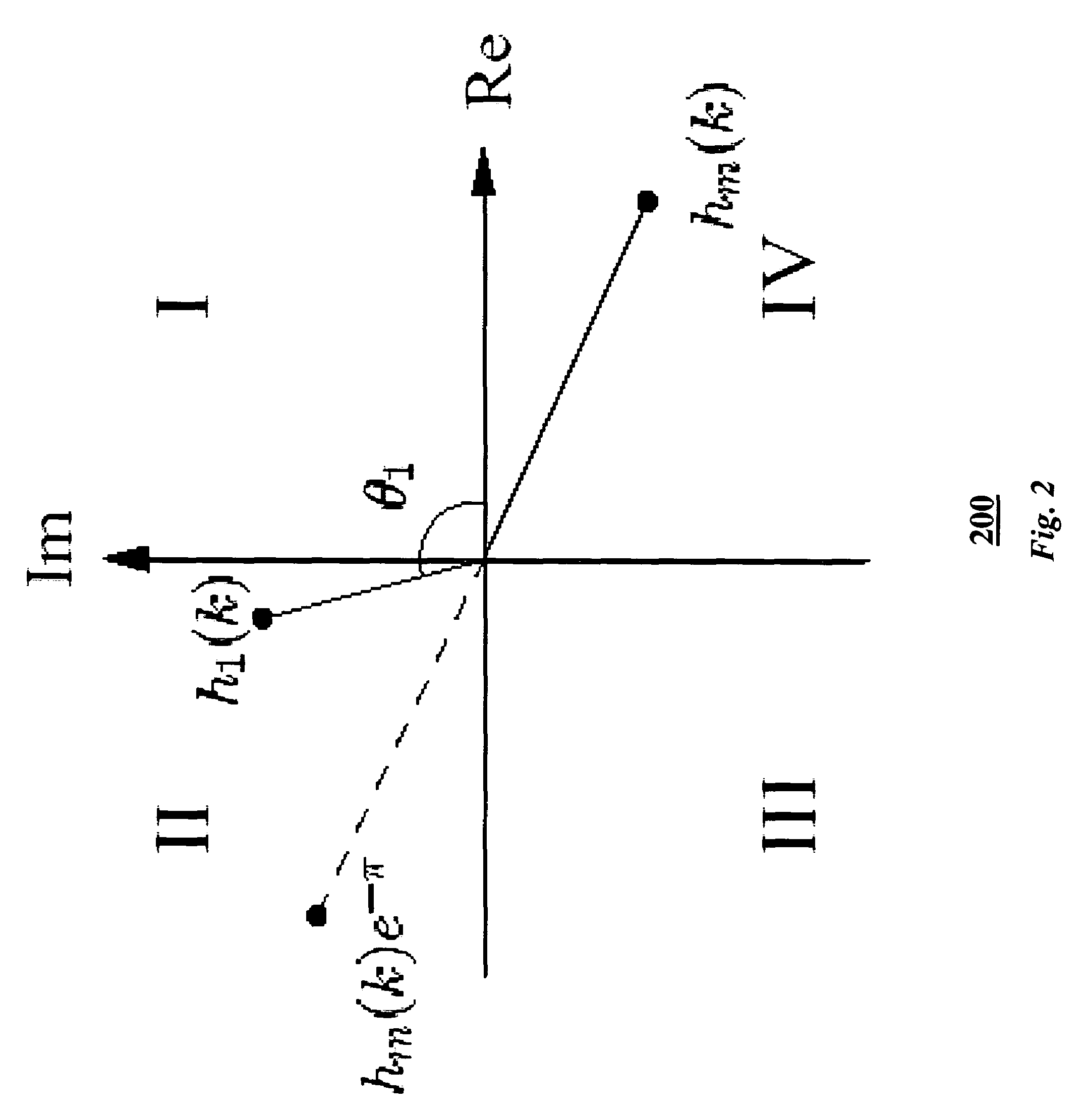Adaptive transmit diversity with quadrant phase constraining feedback
a quadrant phase and feedback technology, applied in diversity/multi-antenna systems, modulation, electromagnetic wave modulation, etc., can solve the problem that the technique still consumes a large number of bits, and achieve the effect of simple feedback
- Summary
- Abstract
- Description
- Claims
- Application Information
AI Technical Summary
Benefits of technology
Problems solved by technology
Method used
Image
Examples
Embodiment Construction
[0022]FIG. 1 shows a baseband representation of a diversity system 100 according to our invention. Our system has M antennas 101 at a transmitter 10, for example, a base station, and one antenna 102 at a receiver 20, e.g., a mobile cellular telephone.
[0023]At a time instant k, a modulated symbol sk 103 is linearly encoded 110 at the transmitter in a space domain according to a space encoding vector 111
pk=[p1(k),p2(k), . . . ,pM(k)]εC1×M
[0024]The encoded transmit data 112 are xk=[x1(k),x2(k), . . . , xM(k)]=pk·sk, with xm(k) being transmitted at the mth transmit antenna 101.
[0025]In our adaptive transmit diversity method, the space encoding vector pk 111 is determined 120 at the transmitter according to feedback information 121 determined from space decoding 130 of the received signal 105 at the receiver.
[0026]Specifically, the feedback information 121 relates to phase differences between pairs of received signals in a fading transmission channel 115. It is desired to minimize the p...
PUM
 Login to View More
Login to View More Abstract
Description
Claims
Application Information
 Login to View More
Login to View More - R&D
- Intellectual Property
- Life Sciences
- Materials
- Tech Scout
- Unparalleled Data Quality
- Higher Quality Content
- 60% Fewer Hallucinations
Browse by: Latest US Patents, China's latest patents, Technical Efficacy Thesaurus, Application Domain, Technology Topic, Popular Technical Reports.
© 2025 PatSnap. All rights reserved.Legal|Privacy policy|Modern Slavery Act Transparency Statement|Sitemap|About US| Contact US: help@patsnap.com



